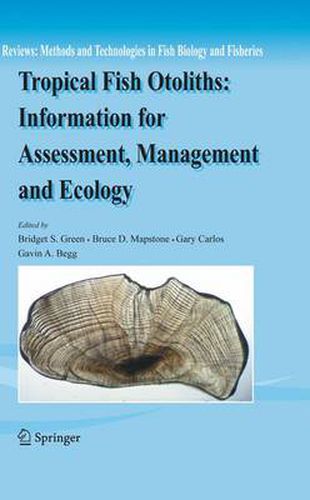Readings Newsletter
Become a Readings Member to make your shopping experience even easier.
Sign in or sign up for free!
You’re not far away from qualifying for FREE standard shipping within Australia
You’ve qualified for FREE standard shipping within Australia
The cart is loading…






This title is printed to order. This book may have been self-published. If so, we cannot guarantee the quality of the content. In the main most books will have gone through the editing process however some may not. We therefore suggest that you be aware of this before ordering this book. If in doubt check either the author or publisher’s details as we are unable to accept any returns unless they are faulty. Please contact us if you have any questions.
Techniques and theory for processing otoliths from tropical marine fish have developed only recently due to an historic misconception that these organisms could not be aged. Otoliths are the most commonly used structures from which daily, seasonal or annual records of a fish’s environmental history are inferred, and are also used as indicators of migration patterns, home range, spatial distribution, stock structure and life history events. A large proportion of projects undertaken on tropical marine organisms involve removal and processing of calcified structures such as otoliths, statoliths or vertebrae to retrieve biological, biochemical or genetic information. Current techniques and principles have evolved rapidly and are under constant modification and these differ among laboratories, and more particularly among species and within life history stages.
Tropical fish otoliths: Information for assessment, management and ecology is a comprehensive description of the current status of knowledge about otoliths in the tropics. This book has contributions from leading experts in the field, encompassing a tropical perspective on daily and annual ageing in fish and invertebrates, microchemistry, interpreting otolith microstructure and using it to back-calculate life history events, and includes a treatise on the significance of validating periodicity in otoliths.
$9.00 standard shipping within Australia
FREE standard shipping within Australia for orders over $100.00
Express & International shipping calculated at checkout
This title is printed to order. This book may have been self-published. If so, we cannot guarantee the quality of the content. In the main most books will have gone through the editing process however some may not. We therefore suggest that you be aware of this before ordering this book. If in doubt check either the author or publisher’s details as we are unable to accept any returns unless they are faulty. Please contact us if you have any questions.
Techniques and theory for processing otoliths from tropical marine fish have developed only recently due to an historic misconception that these organisms could not be aged. Otoliths are the most commonly used structures from which daily, seasonal or annual records of a fish’s environmental history are inferred, and are also used as indicators of migration patterns, home range, spatial distribution, stock structure and life history events. A large proportion of projects undertaken on tropical marine organisms involve removal and processing of calcified structures such as otoliths, statoliths or vertebrae to retrieve biological, biochemical or genetic information. Current techniques and principles have evolved rapidly and are under constant modification and these differ among laboratories, and more particularly among species and within life history stages.
Tropical fish otoliths: Information for assessment, management and ecology is a comprehensive description of the current status of knowledge about otoliths in the tropics. This book has contributions from leading experts in the field, encompassing a tropical perspective on daily and annual ageing in fish and invertebrates, microchemistry, interpreting otolith microstructure and using it to back-calculate life history events, and includes a treatise on the significance of validating periodicity in otoliths.